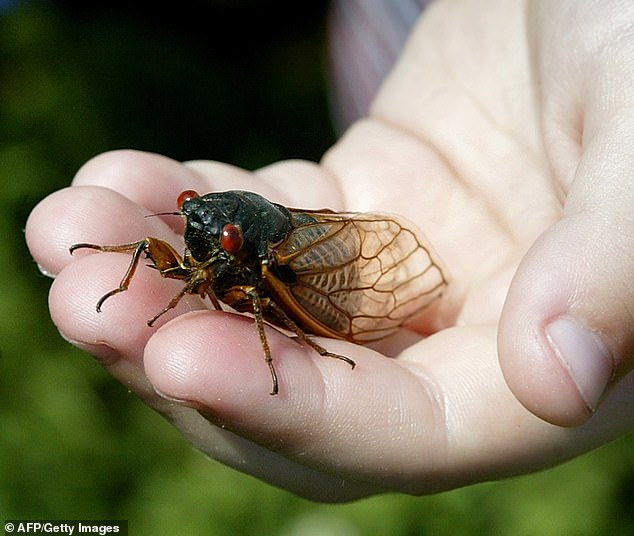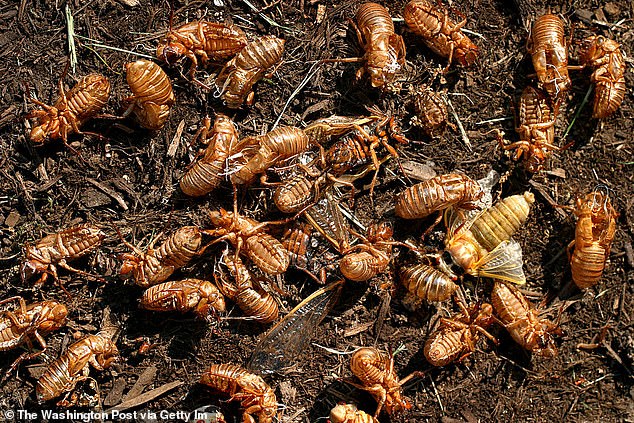For the first time since Thomas Jefferson became president in 1803, two cicada cycles will emerge TOGETHER in Tennessee – and could cause millions in damage
- Experts predict that there will be one million crickets per hectare of land
- The crickets are also expected to irreparably damage trees
- READ MORE: Cicada-killing wasps are popping up across the US to paralyze their prey
Tennessee is on the cusp of a storm of cicadas not seen in more than 200 years.
The curious, winged, red-eyed insects hibernate in 13- or 17-year cycles, but the state will soon be abuzz with both — and experts have predicted there will be a million of them per acre of land.
The blight will likely leave hundreds, if not thousands, of trees “irreparably damaged,” a professor at Tennessee Tech University has warned.
The last time these two groups, Brood XIII and Brood XIX, emerged together was in 1803, the same year as the Louisiana Purchase and when Thomas Jefferson was president.
Tennessee is on the cusp of a storm of cicadas not seen in more than 200 years. The curious, winged, red-eyed insects hibernate in 13- or 17-year cycles, but the southern state will soon be bustling with both
Douglas Airhart, a professor and horticulturist at the university, said: ‘In 2008 we had the 17-year-old crickets, and in 2011 we had the 13-year-old crickets. So they come back.
“So 2024 and 2025, back to back, and that’s why I have this project because the farms are going to be overwhelmed two years in a row.
“In some cases, the trees are damaged beyond repair, what insurance companies call ‘damaged beyond repair to salable quality.’
More than 3,000 species of crickets are known.
The crickets form 15 large ‘broods’ of crickets in different geographical areas, with a life cycle of 13 or 17 years.

The blight will likely leave hundreds, if not thousands, of trees “irreparably damaged,” a professor at Tennessee Tech University has warned.
Bread X is the tenth – where the X is the Roman numeral for ten.
These insects emerge from the ground in large numbers, with some years seeing trillions of crickets per season. They mainly appear in the eastern, southern and central parts of the US.
The timing of these creatures’ emergence from their submerged worlds remains a mystery, but scientists theorize that they developed this tactic to avoid predators.
Cicadas are large, winged brown insects with bulbous eyes.
They spend most of their lives as nymphs living in the ground and feeding on tree roots.
While they remain underground, the insects do not hibernate.
Because they are among the longest-lived insects in the world, they go through several growth stages and molt four times before ever reaching the surface.

Cicadas are relatively harmless and cause more nuisance: they fly into the windshield and leave their small carcasses everywhere
Once the creatures make their way to the surface, they mate and produce a sound that can reach 100 decibels.
What makes these creatures so interesting is that they molt, leaving a crispy brown covering on the trees, allowing them to grow half an inch in size.
When the periodical cicadas emerge, “they just overwhelm an area,” Airhart said
‘As a result, tree farms are losing millions of dollars due to product loss.’
